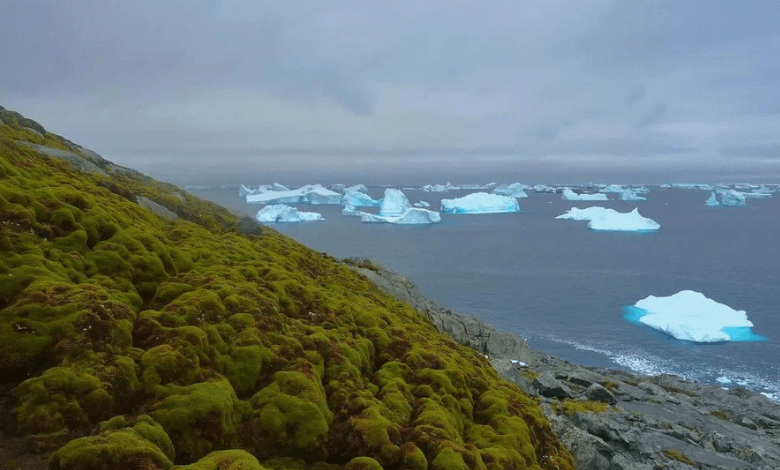Did You Know? Flowers Growing in Antarctica is a Bad Thing

When the word “Antarctica” is mentioned, visions of stark, icy landscapes don’t typically evoke thoughts of vibrant, yellow blossoms. Yet, in a recent scientific revelation, the frigid embrace of Antarctica is witnessing a remarkable transformation, all thanks to the warming embrace of climate change.
Signy Island, a remote outpost just off the Antarctic Peninsula, has become the stage for an unexpected ecological performance. In an Italian study published in Current Biology, researchers have uncovered a mesmerizing surge in two species of flowering Antarctic plants, marking an extraordinary milestone in our understanding of climate change’s impact on this frozen continent.
The Antarctic hair grass and Antarctic pearlwort, the solitary two flowering plants native to the Antarctic expanse, have experienced an extraordinary population explosion. Over a decade, from 2009 to 2018, the study reports a jaw-dropping 154 percent increase in the number of sites graced by the presence of pearlwort.
Meanwhile, the hardy hair grass has extended its domain by 28 percent during the same period. Even more astonishing, these vibrant blooms aren’t merely multiplying in numbers; they’re boldly advancing into the island’s traditionally frosty upper reaches.
Climate Change: The Catalyst
The driving cause for this floral spectacular, according to the researchers, is climate change. The average summer air temperature on Signy Island has been rising since 1960, with a 1.2-degree Celsius rise noted between 1960 and 2011, briefly interrupted by a “cold pulse” in 2012.
However, summer temperatures have rebounded, ascending by 0.9 degrees Celsius over the following seven years. Simulated experiments have underscored the fact that both the Antarctic hair grass and Antarctic pearlwort thrive in these milder conditions.
While warmer temperatures may seem like a boon to these native Antarctic plants, they also bring an unforeseen twist. The more hospitable climate not only nurtures these indigenous blossoms but creates a welcoming environment for invasive plant and insect species. This sets the stage for a dual challenge: the potential displacement of native species, sparking a cascade of biodiversity loss, and fundamental upheavals within these delicate ecosystems.
An Ominous Forecast
The study foresees a continuation of the warming trend in the Antarctic Peninsula region throughout the century. In a chilling “worst-case” scenario resembling business-as-usual, Earth’s climate could mirror the conditions of the mid-Pliocene as soon as 2030.
Climate scientist James Renwick from Victoria University of Wellington sounds the alarm about the profound consequences of such Antarctic warming. While the abundance of flowers may initially appear idyllic, it conceals a more profound threat to the continent’s delicate web of life. Antarctica, accustomed to the languid pace of change, grapples with the tumultuous shifts now in motion. Renwick warns that the repercussions extend far beyond Antarctica, encompassing the entire planet.
A Global Catastrophe Looms
Renwick emphasizes that the warming Antarctic climate poses a colossal risk, with potentially catastrophic global repercussions. Should global warming surpass the two-degree Celsius mark, it might start the Western Ice Sheet from melting permanently, causing sea levels to rise by four meters. The destruction of enormous swaths of land, the mass eviction of hundreds of thousands, and the severe disruption of world agriculture would result from this disastrous event.
Although centuries may pass before the ice sheet’s total dissolution, climate change will not wait patiently. Instead, it will unleash a relentless parade of devastating floods and crippling droughts on a global scale. Renwick’s parting words carry a sobering weight: “It’s nothing short of the collapse of civilizations.”
Also Read : This is Glossopteris Fossils’ Origin’s Climate
As Antarctica bursts forth with its kaleidoscope of colors, it offers a poignant reminder of the complex interplay between nature’s resilience and humanity’s choices in a world undergoing dramatic transformation.



